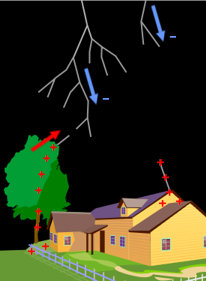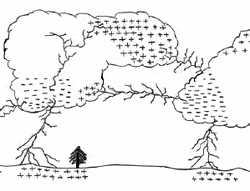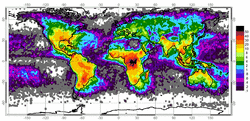Common Misconceptions About Lightning
Research Overview
The answer to how is lightning formed is easy to understand if you know that lightning is a result of several things happening very quickly. There is a whole "behind the scenes" set up to make that bright bolt of lightning we see in a stormy sky.
Clouds become charged, sending out leaders towards the earth. The earth being the opposite charge begins to send out streamers of its own toward the clouds. When these two meet it creates a channel, acting like a metal rod connecting the sky to the earth. Lightning is natures way to equalize the inbalance between the clouds and the earth. The lighting strike is the massive current flowing through this completed channel.
All this leads to the other part of lightning we all recognize - the flash. Believe it or not, air can explode. That massive current flowing through the completed channel is extremely hot, hotter than the surface of the sun actually. This extreme heat causes the air to rapidly expand creating the flash we are used to seeing. These steps also lead to the formation of thunder; lightning's partner in crime. This exploding air starts a compression wave that becomes the rumbling thunder we associate with an active storm cell.
If you would like a detailed explanation of the formation of lightning and thunder follow this link.
Clouds become charged, sending out leaders towards the earth. The earth being the opposite charge begins to send out streamers of its own toward the clouds. When these two meet it creates a channel, acting like a metal rod connecting the sky to the earth. Lightning is natures way to equalize the inbalance between the clouds and the earth. The lighting strike is the massive current flowing through this completed channel.
All this leads to the other part of lightning we all recognize - the flash. Believe it or not, air can explode. That massive current flowing through the completed channel is extremely hot, hotter than the surface of the sun actually. This extreme heat causes the air to rapidly expand creating the flash we are used to seeing. These steps also lead to the formation of thunder; lightning's partner in crime. This exploding air starts a compression wave that becomes the rumbling thunder we associate with an active storm cell.
If you would like a detailed explanation of the formation of lightning and thunder follow this link.
Specific Lightning information
NOAA National Severe Storms Laboratory (http://www.nssl.noaa.gov/primer/lightning/ltg_basics.html)
- Lightning is a gigantic electrostatic discharge
- Convection theorists believe that updrafts transport positive charges near the ground upward through the cloud while downdrafts carry negative charges downward.
- Opposite charges attract one another.
- A current of electricity forces a path through the air until it encounters something that makes a good connection. The current is discharged as a stroke of lightning.
Federal Emergency Management Agency (http://www.fema.gov/kids/thwhat.htm)
- The action of rising and descending air within a thunderstorm separates positive and negative charges.
- Lightning results from the buildup and discharge of electrical energy between positively and negatively charged areas.
Universe Today (http://www.universetoday.com/73587/what-is-lightning)
- Charge separation and accumulation continue until there is a lightning discharge.
- High speed video has shown that most lightning strikes are made up of multiple strokes. A typical strike is made of 3 or more strokes.
National Aeronautics and Space Administration NASA (http://science.nasa.gov/science-news/science-at-nasa/2001/ast05dec_1)
- It avoids the ocean, but likes Florida. It's attracted to the Himalayas and even more so to central Africa. And lightning almost never strikes the north or south poles. (Reference File Below: Lightning Map)
- Lightning is a sudden discharge of electricity between charged regions of thunderclouds and the ground. Only about 25 percent of lightning strikes are cloud-to-ground. The rest are either cloud-to-cloud or intracloud. (Reference File Below: Thundercloud)
Resources
http://scienceinquirer.wikispaces.com/file/view/MisconceptionsAboutLightning.pdf
- This site responds to several misconceptions of lightning such as do car tires ground you if you get hit by lightning while inside a car.
http://stormhighway.com/lfaq.shtml
- This site has a wealth of general information about lightning storms including images, video and quick facts.
http://www.emergencydude.com/storm.shtml
- This site has good suggestions about safety during a thunderstorm.


